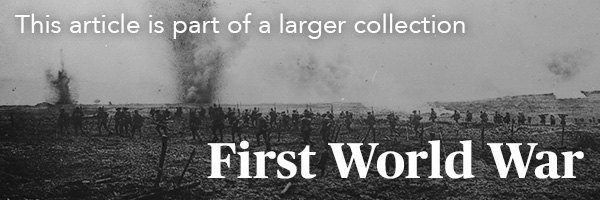The National War Memorial in Ottawa was originally built to commemorate Canada's sacrifice in the First World War (1914–18). It now honours all of Canada's war dead. Sacrifices made in the journey from war to peace are symbolized by a series of bronze figures emerging through a great arch. Overhead, two figures symbolize peace and freedom.
'Sacrifices and Heroism'
A national memorial in Ottawa was proposed by the government of Prime Minister Mackenzie King in 1923. The opposition supported of the idea but criticized the cost. In response to his opponents in the House of Commons, King said, “When a nation loses what is signified by its art it loses its own spirit, and when it loses the remembrance of the sacrifices and heroism by which it has gained the liberty it enjoys, it loses all the vision that makes a people great.”
The 1925 competition to create the monument was open to architects, sculptors and artists living in the British Empire or allied nations, and to those who were British subjects by birth. The budget was advertised as $100,000. According to the competition regulations, the monument was to be "expressive of the feelings of the Canadian people as a whole, to the memory of those who participated in the Great War and lost their lives in the service of humanity."
From the 127 replies (66 from Canadians), the committee chose the entry of Vernon March, a British sculptor. He had completed other noted sculptures, including the Samuel de Champlain monument in Orillia, Ontario.
March's winning design —“the Great Response of Canada” — comprised the bronze figures now seen emerging through an archway. March died in 1930 with the work unfinished, but his siblings completed the project. Canadian officials inspected the work and made several changes to the figures to reflect authentic Canadian uniforms and equipment.
The finished figures, cast in England, went on public display in London's Hyde Park for six months in 1933. The contract to build the granite archway was only granted in 1937, following years of bickering in Ottawa over its location.
Unveiling
Confederation Square, at the intersection of Elgin and Wellington streets — Mackenzie King's preferred location — was finally chosen as the memorial site. A Toronto contractor was hired to beautify the area with stone walkways and terraces. On 21 May 1939, King George VI and Queen Elizabeth dedicated the memorial in a public ceremony during the first visit by a ruling Canadian monarch to Canada.
The impressive structure includes 22 bronze figures marching through the archway. Leading the way (in a hierarchy approved at the time) are infantrymen, a mounted cavalryman, a mounted artilleryman, followed by an aviator, a sailor, a sapper, a forester, a stretcher-bearer and nurses, among others.
In 1982, the Memorial was rededicated to honour, along with veterans of the First World War, those who served in the Second World War (1939–45) and the Korean War (1950–53). On Remembrance Day, 11 November 2014, the monument was rededicated to honour all who had served Canada in wartime. The federal government announced that the dates of the South African War (1899-1902) and the military mission to Afghanistan (2001-2014) would be added to the memorial, along with a new inscription: "In Service to Canada."
Tomb of the Unknown Soldier
In May 2000, the Tomb of the Unknown Soldier was added to the memorial. The remains of this unidentified Canadian First World War soldier were exhumed from Cabaret-Rouge war cemetery in France, close to Vimy Ridge, and flown to Canada where they lay in state on Parliament Hill before being interred in the newly constructed tomb at the base of the National War Memorial. The tomb has since become a touching focus of the annual 11 November Remembrance Day ceremonies.
The Tomb was the scene of a violent attack on 22 October 2014, when a lone gunman, Michael Zehaf-Bibeau, shot and killed army reservist Cpl. Nathan Cirillo, who was standing on ceremonial guard at the Tomb. After shooting Cirillo, Zehaf-Bibeau went on a brief shooting spree inside the Centre Block of nearby Parliament Hill, where was shot dead by security officers.

 Share on Facebook
Share on Facebook Share on X
Share on X Share by Email
Share by Email Share on Google Classroom
Share on Google Classroom








